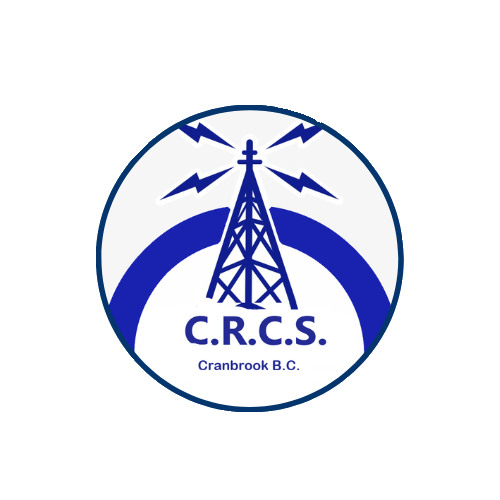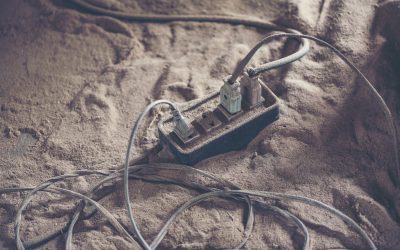Summer brings long days, better propagation, and more opportunities to get on the air from the great outdoors. But with sunshine comes a hidden threat to your rig—heat. Overheating can cause radios to shut down mid-QSO, behave erratically, or even suffer permanent damage. In this post, we’re taking a deep dive into Summer Heat & Radios, exploring why heat is a problem, what thermal shutdown means, and how you can prevent heat-related issues in both shack and field environments.
Whether you’re activating a summit, hosting a field day, or just operating from a sunny patio, a little preparation goes a long way in protecting your gear—and your fun.
Why Summer Heat Is Hard on Radios
Radios generate heat as part of normal operation. Transmitters especially produce a lot of thermal energy, particularly at high power. Add summer sun, high ambient temperatures, and direct sunlight on your equipment, and you’ve got a recipe for thermal overload.
The Signs of Heat Stress in Radios
-
Sudden power loss or shutdown
-
Audio distortion or signal instability
-
Fan running continuously or abnormally loud
-
Display dimming or flickering
-
Failure to key the transmitter
Many modern radios have built-in thermal protection features. These usually involve a thermal shutdown mechanism—if the internal temperature reaches a critical threshold, the rig automatically powers down to avoid damage.
While this is a great feature, it’s not ideal to have your gear drop out mid-QSO or during a contest.
How Thermal Shutdown Works
Thermal shutdown is a failsafe built into transceivers, amplifiers, and other RF gear. A temperature sensor (usually near the final amplifier) constantly monitors internal heat levels. Once the sensor detects a set threshold—often around 70–80°C (158–176°F)—the rig will:
-
Lower output power (thermal throttling)
-
Sound an alarm or warning
-
Eventually shut off completely
Unfortunately, in summer conditions, especially in enclosed or poorly ventilated spaces, it doesn’t take long to reach this point.
How to Prevent Overheating in Your Radio Equipment
1. Ventilation Is Key
Airflow is the single most important factor in heat management.
In the shack:
-
Leave space around your rig’s cooling vents.
-
Avoid stacking equipment directly on top of each other.
-
Use small USB or desktop fans to move air around equipment.
-
Keep equipment off carpeted surfaces that can trap heat.
In the field:
-
Set up your station in shaded areas—trees, awnings, tents.
-
Place rigs on hard, ventilated surfaces—not grass or dirt.
-
Use elevated platforms like milk crates or wood boards to promote airflow.
2. Add Supplemental Cooling
External fans and heatsinks can make a big difference, especially during heavy operating sessions or contesting.
Options to consider:
-
Laptop cooling pads placed under your rig.
-
USB-powered fans directed at rear vents or finals.
-
Custom fan setups using 12V DC fans mounted in enclosures or brackets.
-
Passive heatsinks on amplifier housings or external tuners.
Some hams even 3D-print cooling ducts that channel air through the radio’s own venting system.
3. Monitor Internal Temperature
Knowing your rig’s temperature is half the battle.
Many modern radios offer built-in temperature readouts, accessible through system menus. For example:
-
Icom IC-7300: Check under “Menu > Set > Function > Temp Meter”
-
Yaesu FT-991A: Use the “Display > Moni” setting
If your rig doesn’t offer this, consider an external sensor like:
-
Infrared temperature guns
-
Thermocouple probes
-
Digital thermometers taped to the case
Monitoring lets you back off before you hit shutdown territory.
4. Use Lower Power When Possible
The more power you run, the more heat you generate. If you’re in a hot environment, consider dialing it down:
-
Switch from 100W to 25–50W for casual QSOs
-
Run QRP (under 5W) when testing or ragchewing
-
Use CW or digital modes that produce less average power than voice SSB
Not only does this reduce internal heat, it extends battery life in field setups.
5. Plan Operating Times Smartly
Avoid peak heat hours—usually between 11 a.m. and 4 p.m. Instead:
-
Operate early mornings or evenings when temperatures are cooler
-
Take regular breaks to let your gear cool down
-
Keep rigs off when not in use to prevent idle heating
Bonus: Propagation on 40m and 80m often improves later in the day anyway.
6. Be Mindful of Direct Sunlight
Direct sun can rapidly heat radio equipment even when the air temperature feels comfortable.
Solutions:
-
Operate under a tarp, canopy, or umbrella
-
Use white towels or thermal blankets to cover gear in the sun
-
Position displays and buttons away from direct sunlight to preserve readability and function
Don’t forget your coax, either—some coax jackets degrade under UV exposure.
Summer Shack Adjustments
Even indoor shacks aren’t immune to summer heat. Basements and garages can heat up quickly, especially if unventilated.
Check for:
-
Adequate room ventilation (consider adding a vent fan)
-
Air conditioning or portable coolers
-
Heat buildup from computer equipment nearby
Avoid running multiple high-draw devices on the same power supply in hot conditions—it increases load and heat buildup.
Best Practices for Portable Setups
Field Day, SOTA, and POTA are popular summer activities. Here’s how to make sure your portable rig handles the heat:
-
Pack lightweight, heat-tolerant gear (FT-818, KX2, IC-705)
-
Bring shade, like a tarp or even a sun hat for your radio
-
Use passive ventilation, like mesh tables or wire racks
-
Charge batteries at cooler times, as charging can produce heat
Don’t underestimate how hot it gets inside your go-box, either. If you use a plastic or metal case, keep it cracked open or fan-cooled.
Consider Environmental Durability When Buying Gear
If you frequently operate outdoors in warm weather, it’s worth investing in radios designed for rugged conditions. Look for:
-
Integrated fans
-
High-temp operating specs (above 50°C)
-
Weather-resistant or sealed chassis
-
Efficient thermal designs (like the Elecraft KX line)
Check the spec sheets and operating temps before you buy.
Stay Cool and Stay On the Air
Summer heat and radios don’t have to be enemies. With a few smart practices—ventilation, monitoring, and strategic planning—you can avoid thermal shutdowns and keep your rig happy even on the hottest days.
Operating in warm weather can be rewarding, especially when you’re out in nature or enjoying contest season. But your gear needs a bit of TLC to keep performing.
At CRCS, we believe ham radio should be fun and functional year-round. Whether you’re running a home station or backpacking with a QRP rig, keeping your gear cool is just as important as your antenna choice




